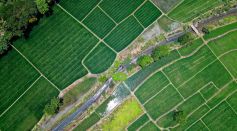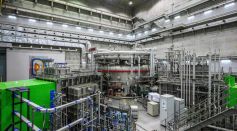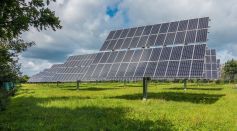Tags: Energy

First Fast Charging Anode-Free Sodium Solid-State Battery Revolutionizes Clean Energy Storage

Ketosis Explained: When the Body Burns Stored Fat For Energy

World's First 'Living Computer' Made From Human Brain Tissue; Is This Science Fiction Turning Into Reality?
Carbon Nanotube Yarns Unlock Low-Grade Waste Heat Energy Harvesting [Study]
Static Electricity: Does It Have Enough Electrical Charge To Ignite a Fire
Google Purchases Biggest Offshore Wind Farm in Netherlands for Clean Energy Generation by 2030

Battery-Free Sensor Uses Sound Waves in Generating Vibrational Energy to Power Electronic Device

MIT Develops High-Performance, Cobalt-Free Sustainable Lithium-Ion Battery

Microbial Fuel Cell Harvests Energy From Soil to Power Sensors; Limitless Energy Shows Potential in Green Infrastructure and Precision Agriculture
Chemical Reaction in Electrode Surface Could Help Design More Efficient Renewable Energy Technologies

Daily Calorie Intake: How Much Should a Person Consume Each Day?

What Is Korea's Artificial Sun 'KSTAR' and What Is It Up To?

Solar Panels: The Good and Not-So-Good Aspects To Consider Before Getting Them

Solar-Powered Atmospheric Water Harvesting Offers Hope for Dryland Regions

Record-Breaking Cosmic Ray Electrons Offer Clues to Their Mysterious Origins in Space
Energy Harvesting Device Captures Power From Liquid Molecules To Generate Electricity on the Nanoscale
Mysterious Blue Molecule Allows Light To Be Squeezed Out; How Does Azulene Help in Efficient Energy Management?

Microbial Energy? Scientists Bioengineer E. coli Bacteria To Produce Electricity, Process Organic Waste
Is Africa Ready for Its Green-Powered Potential? Expert Describes Continent As Powerhouse for Renewable Energy

Black Hole Twistiness? New Theory of Gravity Focuses on Energy, Mass Twists Rather Than Curvature
Most Popular

Dark Matter Explained: What We Know, What We Don't, and How It Shapes Cosmic Structure

Ocean Acidification, Marine pH Change, and CO2 Absorption: How Coral Reef Damage and Shellfish and Plankton Impacts Threaten Marine Life

Memory and Learning: How the Brain Stores, Retrieves, and Forgets Information

Water, Carbon, and Nitrogen Cycles: How Biogeochemical Cycles Sustain Earth's Ecosystems





